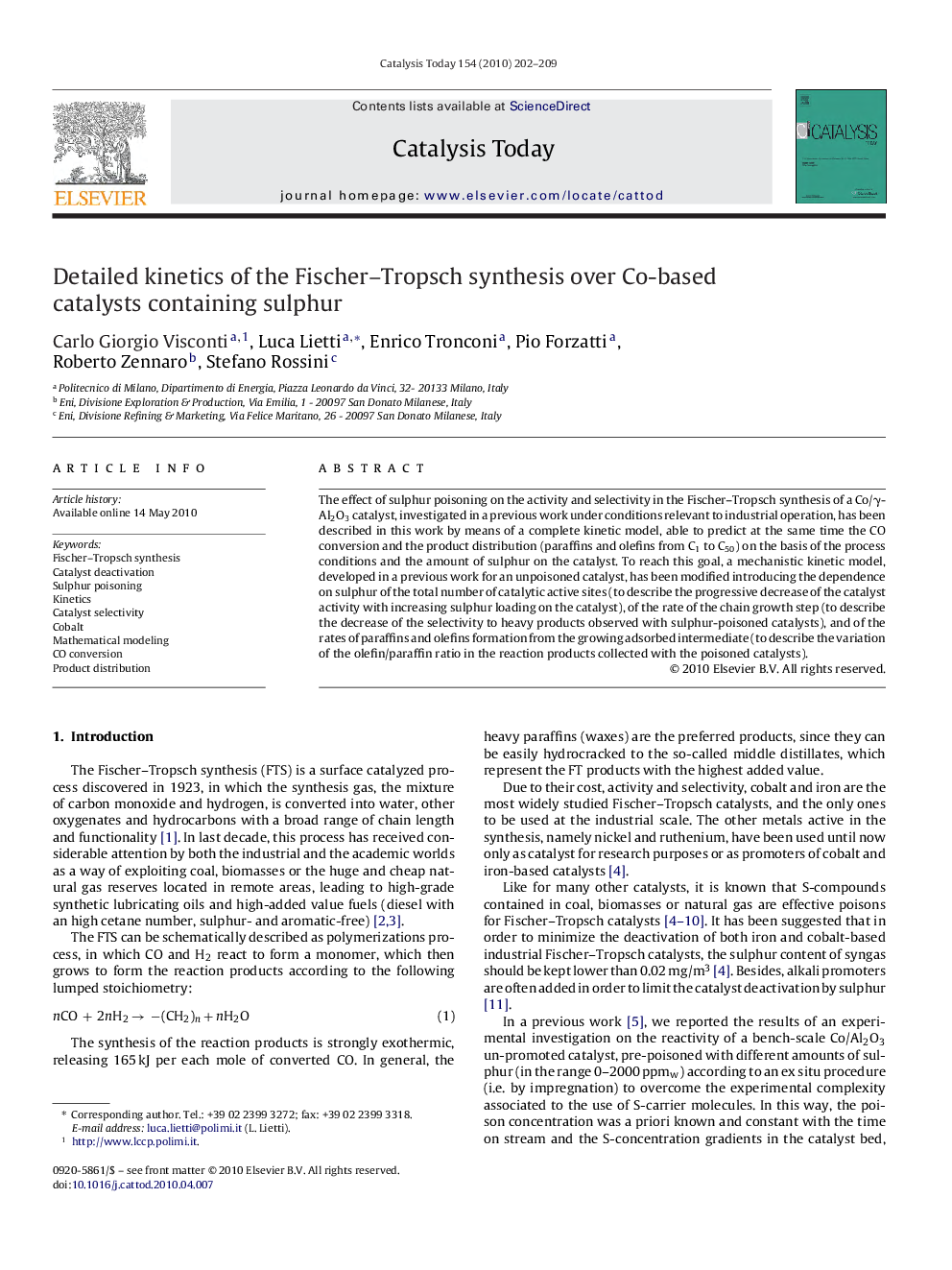| Article ID | Journal | Published Year | Pages | File Type |
|---|---|---|---|---|
| 56272 | Catalysis Today | 2010 | 8 Pages |
The effect of sulphur poisoning on the activity and selectivity in the Fischer–Tropsch synthesis of a Co/γ-Al2O3 catalyst, investigated in a previous work under conditions relevant to industrial operation, has been described in this work by means of a complete kinetic model, able to predict at the same time the CO conversion and the product distribution (paraffins and olefins from C1 to C50) on the basis of the process conditions and the amount of sulphur on the catalyst. To reach this goal, a mechanistic kinetic model, developed in a previous work for an unpoisoned catalyst, has been modified introducing the dependence on sulphur of the total number of catalytic active sites (to describe the progressive decrease of the catalyst activity with increasing sulphur loading on the catalyst), of the rate of the chain growth step (to describe the decrease of the selectivity to heavy products observed with sulphur-poisoned catalysts), and of the rates of paraffins and olefins formation from the growing adsorbed intermediate (to describe the variation of the olefin/paraffin ratio in the reaction products collected with the poisoned catalysts).
